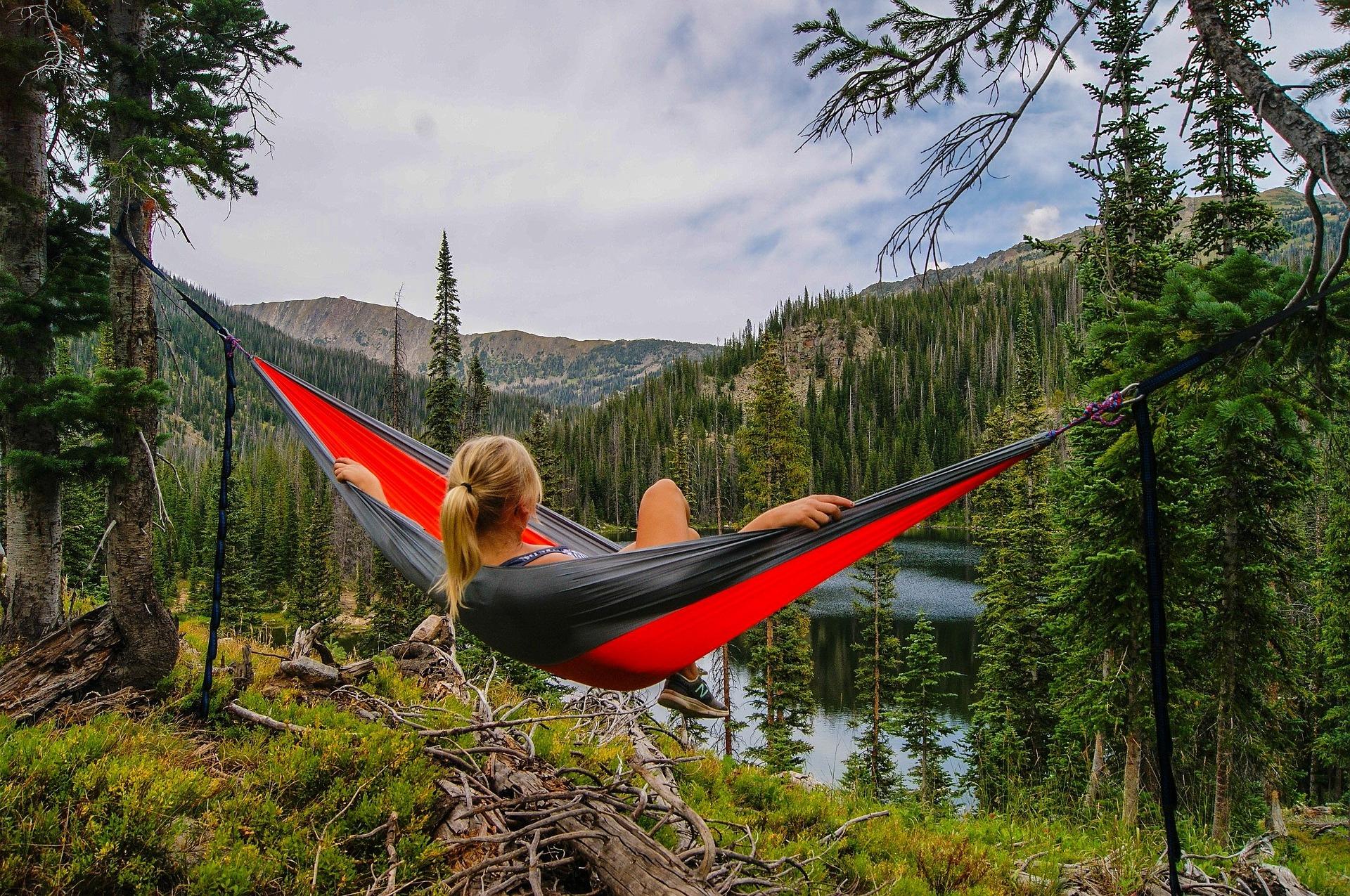- Home
- The Littlbug Blog
- Stove
The Littlbug Blog
Recent Posts
Your Outdoor Skills: Hammock Camping
Posted by on

You love laying in a hammock on a warm summer day, relaxing and swaying in the wind. Hammocks make the perfect camp accessory to lounge in after a long hike, bike ride, or climb. Before you know it, your hammock’s gentle swing has rocked you to sleep. You wake up realizing that you aren’t stiff and sore like you would feel after a night on the ground in your tent. Wouldn’t it be nice to wake up sore free every morning? But what about your tent? With a few tips and a little practice, hammock camping will be a game changer.
You may have a few questions before you start hanging. We have a few tips that will hopefully answer some of your questions:
Won’t I be cold?
When you sleep in a tent, you usually sleep on a sleeping pad or mat. This helps make sleeping on the ground more comfortable. A sleeping pad also serves as a way to keep you warm. Sleeping pads keep your body heat from absorbing into the ground. The sleeping pad traps your body heat inside of it and next to your body, keeping you toasty warm. The same goes for a hammock. The nylon layer cradling you in the air is breathable, which means all your body heat escapes into the air. To prevent this from happening, slide a sleeping pad under your sleeping bag before you climb in. You’ll find this makes for a much warmer experience.
Doesn’t that hurt your knees?
You may have watched some of your friends hang their hammocks as tight as possible. They do this to avoid waking up in a "V" with their head and feet above their waist. This happens because they lay inline with the trees anchoring the hammock. The tighter they hang their hammock, the flatter it becomes, eliminating the "V" effect. But, this is not the right way to hang in a hammock.
Hammocks are designed in a way that allows you to lie flat without having the hammock taut. For this to work, hang your hammock with a loose sag in it. When you climb into your hammock, lay at a slight angle from the anchor trees. This angle causes the hammock to create a flat surface and stops your body from becoming a "V". It saves your knees and gives you a much better night's sleep.
How do I keep from getting wet when it rains?
The nylon material of camping hammocks makes them lightweight and breathable. You don't mind if this quick drying material gets wet while you're out exploring. When your hammock serves as your sleeping quarters though, you'll want a rainfly to protect your hammock from the elements. There are tarps made specifically for hammocks, which can be expensive. A simple rectangle or square tarp will do the trick as long as it is waterproof and doesn’t have any holes in it. You'll also want to make sure the tarp has guy-lines or a place to install some of your own. These will make hanging your tarp much easier. Hang the tarp in an A-frame above your hammock. We like to give ourselves enough room to stand straight under the tarp, but don't hang it too high above the hammock.
What about the bugs?
You can find a variety of bug net options for your hammock. Some hammocks come with the bug net attached with a zipper to close you in. But they also make bug nets that slide over the hammock. These are a great option because they give you the choice to remove the bug net if you don't need it.
What if the trees are too far apart?
There is no need to stress out over this happening to you. You can sleep comfortably in a hammock without it being completely suspended. Here is how one of the folks at Littlbug Enterprises deals with this challenge.


Now that you know the basics, you are ready for a successful hammock camping experience! Don't forget to grab your Littlbug stove for easy cooking and follow the Leave No Trace principles.

Gear Recommendations from Rob Kesselring: Wilderness Guide, Writer, Workshop Leader
Twig stoves are all the rage these days. My final gear recommendation is the Littlbug. It is the granddaddy of twig stoves, both because it's been around for years and because it is the biggest.Last summer, I did an eight day Quetico trip, and I did not carry an axe, saw, or gas stove, just [...]
A simplified guide to survival camping!
In an era where we go camping with enough food and gear to support a delegation for weeks, the idea of survival camping may sound scary at the least.However, modern camping is always about going out there with nominal items and trying to wing it. It is an exercise, a test for our outdoor skills and an opportunity to [...]
Comparing Wood Burning Backpacking Camp Stoves | What's Important and Why It Matters (Part Six)
In this collection of posts I am presenting 20 considerations that are important when choosing your wood burning backpacking camp stove and showing how these considerations are dealt with in four different stove designs available on the market today. In this post I will discuss the complexity, Leave No Trace capability, available accessories, company values, [...]
Comparing Wood Burning Backpacking Camp Stoves | What's Important and Why It Matters (Part Five)
In this collection of posts I am presenting 20 considerations that are important when choosing your wood burning backpacking camp stove and showing how these considerations are dealt with in four different stove designs available on the market today. In this post I will compare the pot supports, wind and cold weather performance and the [...]
Comparing Wood Burning Backpacking Camp Stoves | What's Important and Why It Matters (Part Four)
In this collection of posts I am presenting 20 considerations that are important when choosing your wood burning backpacking camp stove and showing how these considerations are dealt with in four different stove designs available on the market today. In this post I will compare the weight, stability, boil time, size and accessibility of the fuel [...]
Comparing Wood Burning Backpacking Camp Stoves | What's Important and Why It Matters (Part Three)
In this collection of posts I am presenting 20 considerations that are important when choosing your wood burning backpacking camp stove and showing how these considerations are dealt with in four different stove designs available on the market today. In this post I will compare the packed size and shape of the Littlbug Junior, Solo Titan, [...]
Comparing Wood Burning Backpacking Camp Stoves | What's Important and Why It Matters (Part Two)
In this collection of posts I am presenting 20 considerations that are important when choosing your wood burning backpacking camp stove and showing how these considerations are dealt with in four different stove designs available on the market today. In this post I will compare the assembled size of the Littlbug Junior, Solo Titan, Emberlit FireAnt [...]
Comparing Wood Burning Backpacking Camp Stoves | What's Important and Why It Matters (Part One)
Over the next several posts, I will present 20 considerations that are important when choosing your wood burning backpacking camp stove and show how those considerations are dealt with in four different stove designs available on the market today. Getting ready to buy a stove and want to read the complete article now? Just send us [...]
Tales of Fire in the Belly: Hudson Bay Adventure
Don't miss the highlighted sections!In the summer of 2016, the four of us– Mark Heiman, Mike Heiman, Allison Heiman, and me, Laura Gundlach– all embarked on a huge adventure, canoeing from the Boundary Waters in Minnesota all the way to York Factory on Hudson Bay in northern Manitoba, Canada. The trip ended up encompassing over 1200 miles and took 78 [...]
 Loading... Please wait...
Loading... Please wait...








